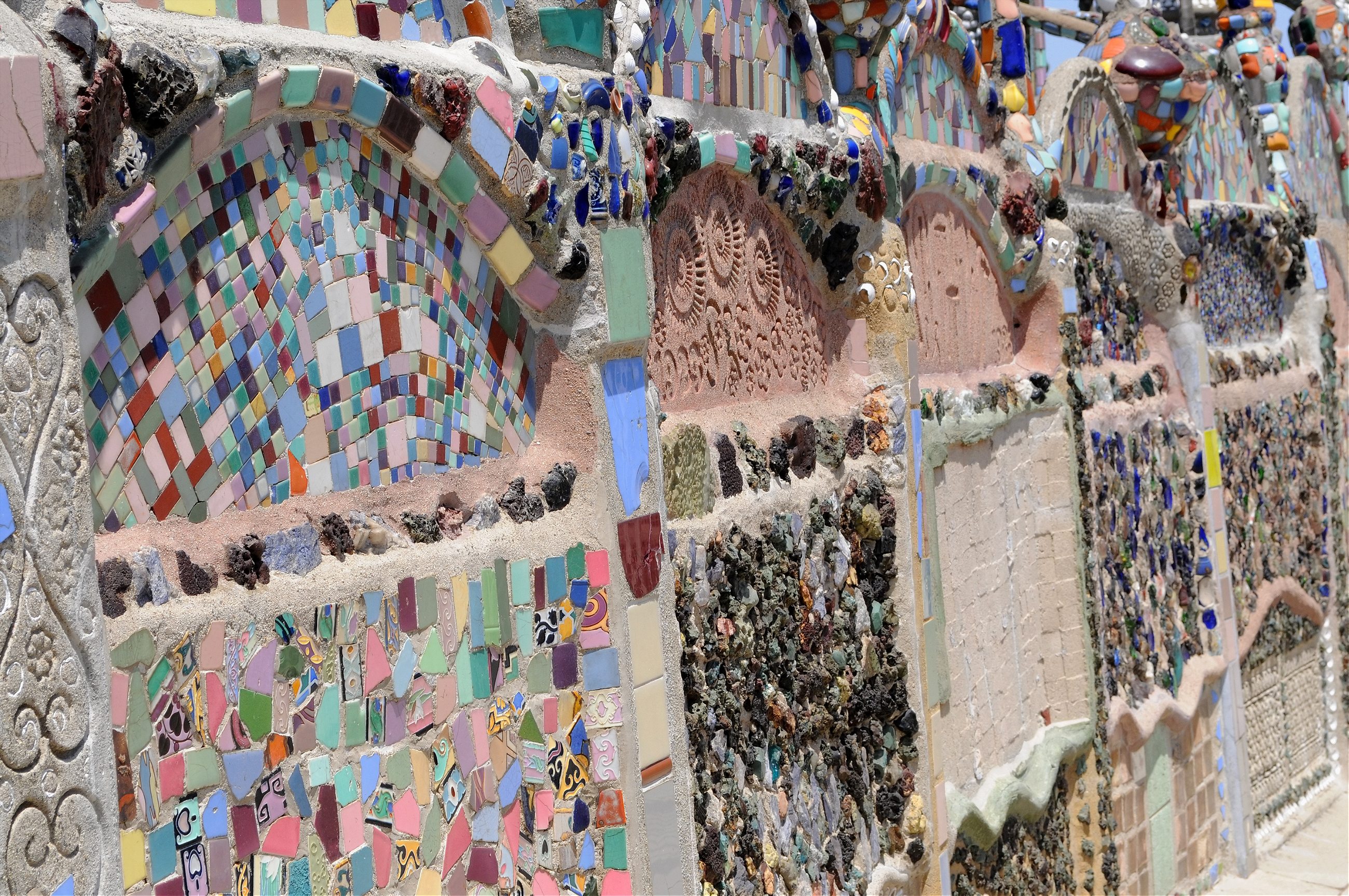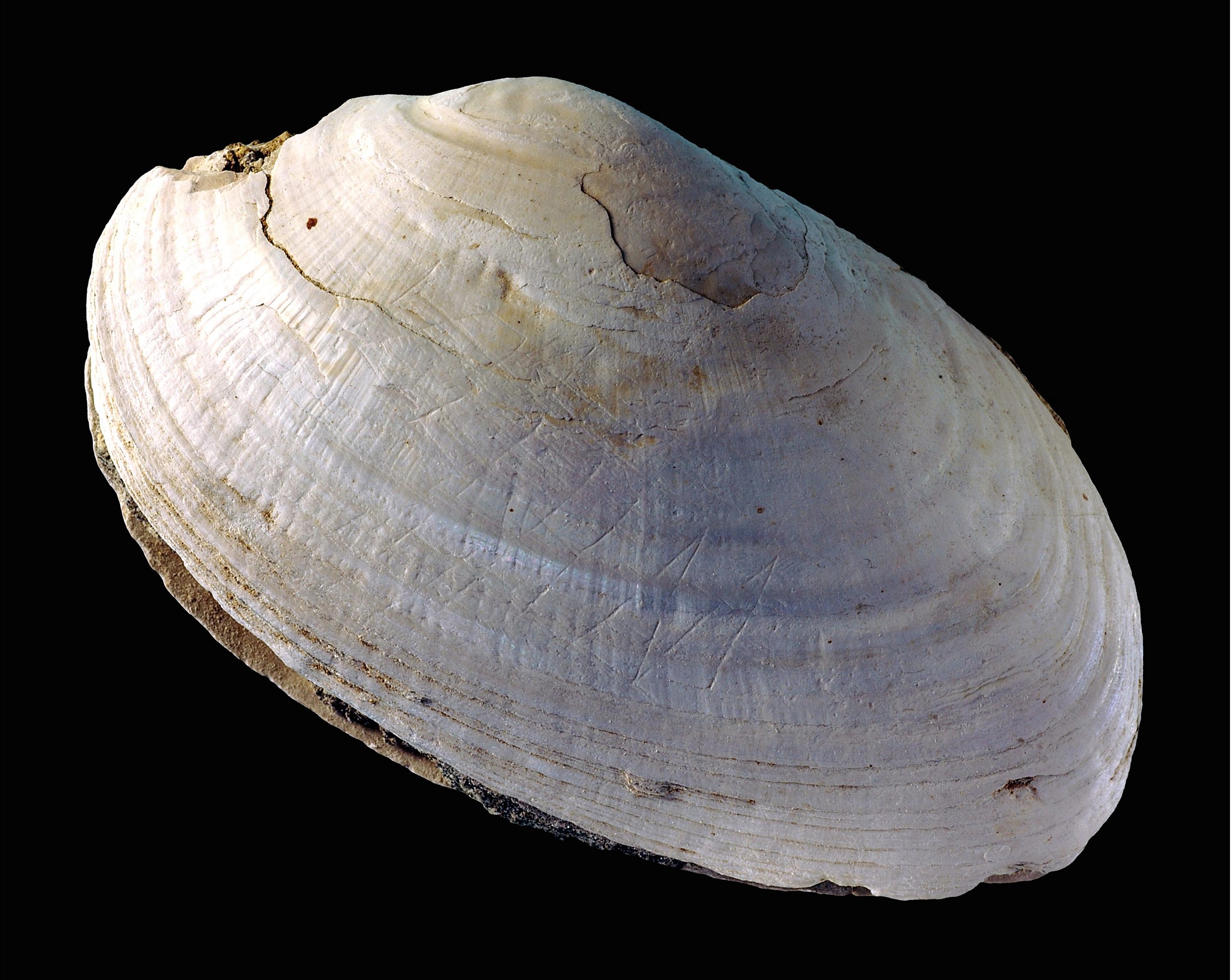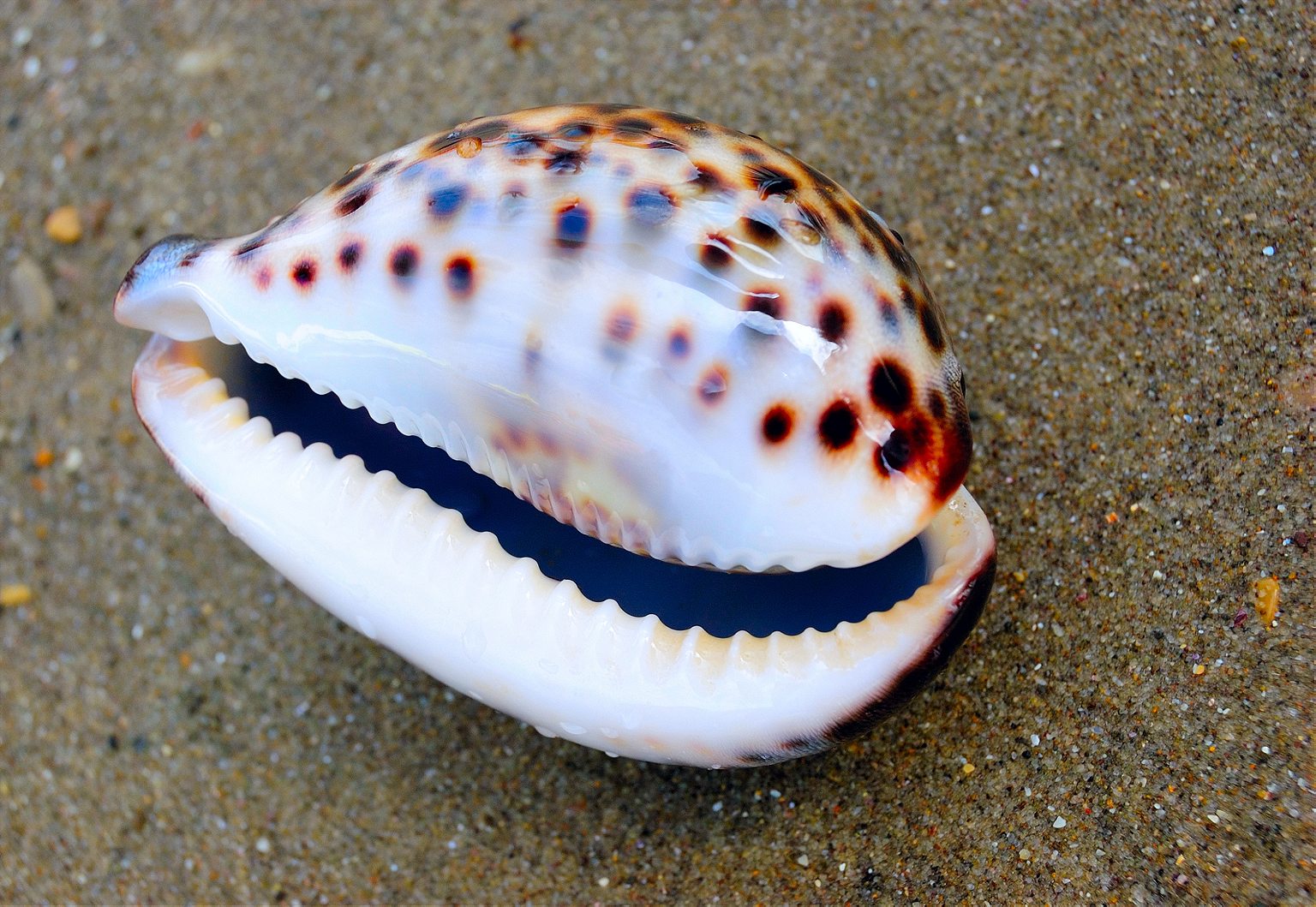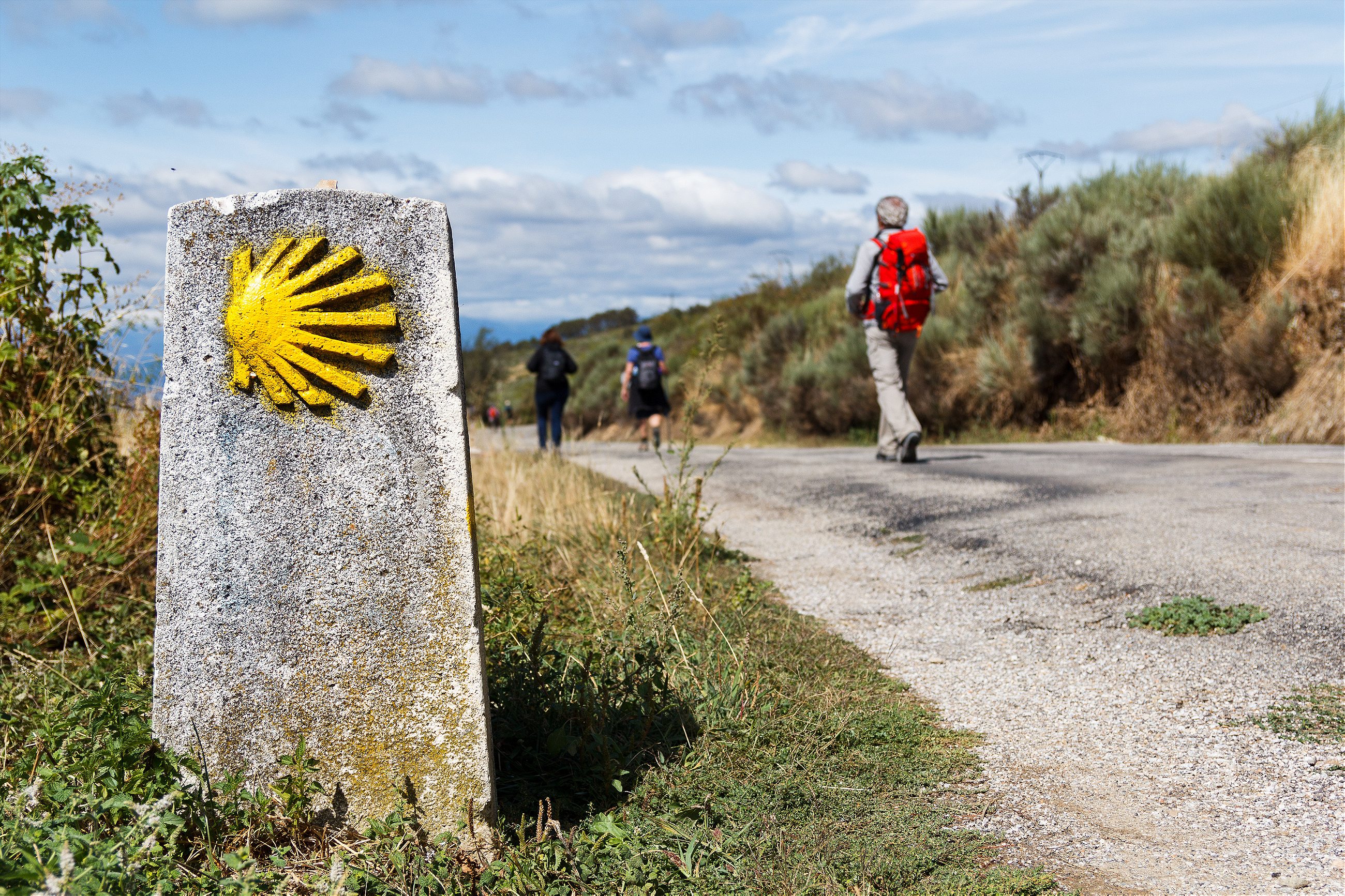Collecting seashells is as old as humanity. What we do with them can reveal who we are, where we’re from, and what we believe.
This article was originally published in Hakai Magazine.
I wanted to do something. I wanted to do something big. —Sabato Rodia
Sabato Rodia was a beachcomber. Barely five feet tall, with a face as creased as a used map and eyes perpetually squinted against the sun, he spent untold days prowling the beaches and estuaries of Southern California with an old cement sack slung over his shoulder. As he walked, he filled the sack with the shells that marine mollusks had once built from seawater to protect their vulnerable bodies.
In a way, the seashells also shielded Rodia from the blows of a difficult life. When he was 14, Rodia’s family had sent him from Italy to the United States to earn a living as a coal miner and construction worker. Labor conditions in turn-of-the-century America were crushing though, and after Rodia’s brother died in a mining accident, he buckled under their weight. He drank too much and beat his wife Lucia, then left her and their children. By the 1920s, Rodia was living alone on land he’d bought for US $900 in Los Angeles’ Watts neighborhood, barely literate and working as a tile setter.
That’s when he turned to the sea for salvation. Over the next three decades, Rodia hauled some 10,000 seashells from the coast to his property, where he built a whimsical fantasy of concrete walls, arches, and towers that soared to over 30 meters. He studded the structure with the shells, as well as with broken tools, plastic toys, glass bottles, pieces of tile, and thousands of other found objects. The obsession helped him stay sober. “I was one of the bad men,” he once said. “I was drunken, all the time a drinkin’. … That’s why I built the tower for, I quit the drinkin’.”
Nuestro Pueblo—Our Town, as Rodia called his creation—drew in the neighborhood’s working class immigrants. Some held weddings and baptized their children within its lacy walls. Then, in 1954, Rodia abruptly handed his keys to a friend, left Watts, and never returned, even when Los Angeles threatened to demolish his “pile of junk” three years later.
In Rodia’s absence, Watts rose to defend its orphaned landmark. Residents convinced officials that if a crane could pull on the towers with 4,500 kilograms of force without toppling them, they should stay. The towers stood. Today, visitors from around the world flock to the Watts Towers, and the city that sought their demolition has sunk millions of dollars into their upkeep. Scholars look to them for insights on class politics, the Italian-American diaspora, and art history. But until recently, few people paid attention to the towers’ seashells.

So Bruno Pernet, a marine biologist at California State University, Long Beach, decided to look at Rodia’s history through the mollusks he collected. After several years of identifying clams, abalone, and other shells, Pernet and his colleagues realized that they not only corroborated scattered accounts of Rodia’s beachcombing habits, they captured a richer moment in the region’s environmental history. Some of the towers’ most common species are now locally extinct or rare, and invasive newcomers have become common.
“If he tried to do this today, in the kinds of habitats I think he collected most of his shells from, it would not look like this,” Pernet said when he led me through the towers last spring, pointing to a row of white clam shells pressed into an archway. “It’s like a time capsule at a very coarse level.”
Like Rodia, people around the world and throughout history have carried shells far from the coast, where they’re sometimes preserved for hundreds or thousands of years. Just as the towers’ shells tell a story about Rodia and his home, these shells give archaeologists a record of what people ate, their trade and travel routes, and the environments they called home.
Seashells are what scientists call mnemoactive objects: physical triggers of rich sensory memories.
But shells can also reveal deeper truths about long-ago humans. Seashells are what scientists call mnemoactive objects: physical triggers of rich sensory memories. Rodia might have run his calloused palm over a piece of abalone, for instance, and relived the moment he picked it up—the gulls reeling overhead, the salty air, the freedom he felt walking the coast. Other people have incorporated shells into ceremonies and rituals commemorating the most profound moments of their lives; these shells may have called to mind a spiritual experience, or perhaps the elemental force of birth or mysterious, yawning chasm of death. Read in context, the shells people leave behind hold within their wave-polished chambers the full arc of the human experience.
Spirit need these things same as man. Then the spirit rest and don’t wander. —Resident of the Georgia Sea Islands, describing shells and other objects on African American graves
Humans’ affection for shells is older than our species. Half a million years ago, Homo erectus, a precursor to modern Homo sapiens, sharpened the edge of a freshwater mussel shell on what’s now the Indonesian island of Java. Archaeologists found this simple tool among a pile of shells surrounding Homo erectus bones, invoking a vision of an archaic human squatting in the jungle, prying open mussels and slurping down the calories he needed to survive.
Homo erectus weren’t just using mussels for tools and food, though. Among the shells, archaeologists also found one bearing a remarkable zigzag pattern. Analysis revealed it to be the world’s oldest known engraving, predating similar carvings by 300,000 years. That means before Neanderthals painted abstract designs onto cave walls in Spain, before people even mastered the art of making fire, someone created beauty by drawing on a shell, projecting some part of themselves onto the natural world.
People also made the earliest known jewelry from shells. Around 100,000 years ago, researchers believe that people in present-day Israel, Morocco, and Algeria drilled holes into marine snail shells to create beads, which they traded or carried inland, perhaps strung on lengths of fiber. Marian Vanhaeren, an archaeologist from the University of Bordeaux in France who helped identify the beads, says that people must have been particularly smitten with shells to transport them such long distances, rather than using stones or other raw material closer at hand. She sees similar tendencies across the globe, from the deserts of Arizona—where Hohokam people wore hoop bracelets made from Pacific clamshells some 2,000 years ago—to the inland mountains of Western New Guinea, where Eipo people continue to value shell jewelry with little understanding of where the raw materials originated.

“The Eipo had no idea they were an animal from the sea. They did not even know the sea,” says Vanhaeren, who also does fieldwork in New Guinea. “This was very astonishing to me, that these shells, they travel, and people always see them as special.”
Archaeological evidence suggests that around the same time people started decorating themselves with shells, they also began tucking them into graves. Some 74,000 years ago, mourners in South Africa buried a four- to six-month-old infant in a cave 82 kilometers from the coast. Before covering the tiny body with dirt, they placed in the grave a Conus shell, a marine mollusk slightly bigger than a lima bean with a repeating brown-and-white pattern. The shell had a hole drilled through it, suggesting that it had been worn as jewelry, and was covered in ochre, a red pigment that signifies importance in historical and modern cultures. It’s the earliest known evidence of humans intentionally burying personal adornments in a grave.
Why a shell? Did they hope it would protect the child in the afterlife? Was it a status symbol? Or simply a beloved object left behind with a beloved person, an expression of grief?
Whatever the reason, the practice stuck, reverberating across cultures. In the Kongo-speaking region of central Africa, people believed that shells formed the boundaries of the dead’s underwater realm; lining a grave with shells ensured a spirit’s safe passage to this aqueous underworld. In Senegal’s Saloum Delta, people created huge burial mounds out of shells. Archaeologists have identified 8,000-year-old shell burial mounds in the southeastern United States, mother-of-pearl shells in a 5,000-year-old Palestinian grave, 2,000-year-old Conus shell rings in graves in the Marshall Islands, and dozens of similar examples from around the world.

Ashley Dumas, an archaeologist with the University of West Alabama, believes the reason so many cultures use shells in burial rituals is that shells are liminal. “They come from the seashore, which is neither fully land nor fully sea,” she says. “That ties in with a lot of cultures’ thoughts about what death is”—a state where you’re neither fully gone, nor fully of this world. Just as a shell persists after the creature it housed decomposes, so too might a person’s soul or spirit live on, an eternal thing more beautiful than the body it left behind.
[The shells] reminded all of us pilgrims that in the midst of a world both beautiful and broken there are signs to help lead us forward, sometimes right under our feet. —Camino Divina, Walking the Divine Way
You might imagine that the prettiest shells are the ones people treasure most. But Chris Meyer, an invertebrate curator at the National Museum of Natural History in Washington, DC, has found otherwise. For years, Meyer asked museum visitors to randomly choose five cowrie shells from a collection of 75 and rank them from least to most beautiful. Although men and women and young and old people were each drawn to different species, people agreed that shells with striking patterns and contrasting colors were the most visually arresting. “Shells just kind of resonate with our perception of beauty,” Meyer says. “Every single one is different because they’re made by a different animal.”
Yet the shells museum visitors found most beautiful weren’t those most sought by shell collectors, who spend thousands of dollars for rare specimens. Nor were they necessarily the shells used in rituals or ceremonies, or prized as objects of power. While we may initially be drawn to shells because of how they look, Meyer and others think it’s a shell’s exoticism—how far it travels and how rare it seems—that gives it value.
Cowries stood for procreation in cultures around the world.
Such was the case with cowries from the Indian Ocean, which Arabic traders brought across the Sahara and into West Africa starting around the 11th century. With rounded tops that look like a pregnant woman’s belly and folds that resemble labia, cowries already stood for procreation in cultures around the world: Japanese women gripped them during childbirth, and Egyptian women sewed them into their aprons to prevent miscarriage.
In West Africa, too, cowries came to symbolize life. Healers among Nigeria’s Yoruba people treated pregnancy-related maladies with whole or ground cowries mixed in herbal drinks. Priests and priestesses used the shells to consult with gods, tossing them onto the earth and reading messages from the way they fell. People placed cowrie shells in graves so the dead could use them in their next life. And the Yoruba also used cowries to send messages between villages—a form of early letter writing. Two cowries facing each other tied with a black thread requested a meeting with the recipient. Shells accompanied by a feather meant, “I am coming; be expecting me.” A cowrie pierced with wood meant a person was being driven away, while eight cowries sent together meant someone was free from danger.

Cowries’ durability and relative rarity made them a popular currency, too. By the 1600s, demand was so high that instead of bringing them overland on camel caravans, traders had begun importing cowries by sea. British ships alone carried over 90,700 kilograms a year to the shores of West Africa. But these shells, so revered as symbols of birth, were bound for dark purpose: to buy and sell people into a sort of living death.
The 12 million Africans whose lives were exchanged for a bag of shells were thrown, often naked and branded, onto ships bound for the New World. They endured unimaginable suffering. Yet somehow, a few managed to smuggle with them pieces of home—including cowries, later excavated from plantations around the Americas. The shells, once again, had traveled.
When cowries weren’t available, these new Americans carried out the divination and funerary rites of their homelands with local shells. Even far inland, enslaved Africans and their descendants somehow got ahold of shells to bury alongside their dead or use to mark graves, often in ways reminiscent of African burials. The shells’ meaning likely changed over time, says Ashley Dumas, but the practice remained a form of communication “as visible as the writing on the tombstone itself.”
Americans from other ethnicities and classes also put shells on or around graves in the 19th and 20th centuries. “It’s a widespread trend,” Dumas says. “And the fact that it’s all shells probably speaks to some common thread of symbolic meaning.”
The route to Santiago de Compostela was marked with scallop shells, and people wore them as badges to ensure safe passage.
For Christians, that symbolic meaning may have stemmed from a story involving the apostle James the Greater, who used a scallop shell as a bowl as he begged for food and spread the gospel of Jesus Christ. Starting in the Middle Ages, pilgrims visiting James’s tomb in Santiago de Compostela, Spain, began carrying scallop shells in his honor. The route to Santiago de Compostela was marked with scallop shells, and people wore them as badges to ensure safe passage. Pilgrims elsewhere adopted the practice, and before long, the shells cropped up in Christian rituals as symbols of spiritual birth. Fountains used for baptisms were sometimes shaped like scallop shells; Catholics across Europe built shell-embedded grottoes to honor saints; and Americans of European descent put shells on tombstones in the American South.

Yet tracing Christians’ affinity for shells to a single apostle seems too neat an explanation. Religions the world over include connections to shells—the Hindu god Vishnu, the creator, is shown holding a conch in his right hand, and the Roman goddess of love and fertility, Venus, is often painted rising from the sea in a clam shell. In Japanese Shugendō and other Eastern religions, a conch trumpet makes a holy sound. A right-coiled conch is one of the eight auspicious symbols of Buddhism, honored as far inland as the Tibetan Plateau. Ancient Peruvians may have used a figurine playing a conch trumpet as a vessel for the hallucinogenic drugs that facilitated religious experiences. Modern-day “oracles” even advertise seashell divination services on the internet, and practitioners of voodoo and Santeria read cowries to illuminate the will of gods and spirits, just like Yoruba priestesses.
Chris Meyer speculates that the human brains is so inherently drawn to shells’ beauty that cultures across the globe instilled them with spiritual meaning independent of one another’s influence. Maybe that’s true. Or maybe the same mysterious thread of belief that compelled early humans to bury their dead with Conus shells followed people on their migrations out of Africa, weaving its way through time and space, surfacing here and there, catching the light.
Oh, I shall make such a collection of shells—Univalves, bivalves, multivalves and sea urchins. —John Ruskin
The morning Bruno Pernet took me to Watts was foggy and cool. City officials had closed the Towers to the public for restoration, and I first glimpsed them through layers of scaffolding and tarps. But as we walked past the construction, the fog burned off, and the broken glass and iridescent shells of Rodia’s world seemed to snag sunlight from the California sky.
Rodia wasn’t religious, but his aesthetic reflected his Catholic upbringing. One scholar points out that the Watts Towers resemble the ceremonial spires honoring Saint Paul that are paraded each year through the Italian town of Nola, near Rodia’s childhood home. Another sees similarities between Rodia’s style and the shell-inlaid shrines that European immigrants built in their backyards to remind them of grottoes back home. Either way, it seems Rodia’s art offered him redemption not only through its creation but through the memories it invoked. The shell-studded mosaics were touchstones, helping him feel at home in a foreign land.
To get some sense of that home, I set out to retrace Rodia’s footsteps along Southern California’s coast. Rodia once told a historian that he had collected shells between San Pedro and Long Beach, where a rich wetland formed at the mouth of the Los Angeles River and where workers were then beginning to build the Port of Long Beach. Today, that wetland is gone, paved over into a polluted, industrial maze where cranes swing 26,000-kilogram shipping containers full of sneakers and iPhones onto the trucks and trains that will haul them across the United States. A local ecologist advised me against walking through the port; a friend of hers had tried once and found it “positively surreal and dangerous.”
If shells are growing scarcer, what will these symbols of birth and redemption be to people in the future?
Instead, I headed for Long Beach itself, a crescent of sand ringed by hotels and sprinkled with palms. As I walked between joggers and down-on-their-luck people passed out in the sand, I looked for shells among cigarette butts and wave-buffeted plastic. There were none, perhaps because of another thing the ecologist had told: sediment loss and erosion now eat away at the beach so badly that the country occasionally remakes it by hauling in tons of sand from elsewhere.
I spent my last day in Southern California navigating Long Beach’s public bus system to reach a lagoon where Pernet believed Rodia had gathered clam shells. I pictured a cobalt oasis; instead, I found a murky pond hemmed by streets whose only connection to the sea was a 300-meter concrete tunnel. A mural painted on a shuttered visitor center hinted at the ecosystem that had once thrived between the Pacific Ocean and the lagoon’s shores.
In the end, the only members of the phylum Mollusca I encountered were the octopuses at the Aquarium of the Pacific. There, despite hundreds of children eating chicken tenders in Café Scuba, singing “Baby Shark” in front of the shark exhibit, and pressing their noses to glass tanks as harbor seals arched past, the aquarium felt like a catalogue of loss; a curated glimpse of the biodiversity once so accessible that Sabato Rodia handily gathered 10,000 shells. If shells are growing scarcer, I wondered—or if the places where we find them are at least more difficult to access—what will these symbols of birth and redemption be to people in the future?
The most satisfying answer I found came from Tongva archaeologist Desiree Martinez. Before Rodia, before immigrant labor built the city of Los Angeles, before 18th-century Spanish missionaries colonized this land, it belonged to Martinez’s ancestors, Southern California’s original shell collectors. The Tongva rowed plank canoes to Catalina Island to find certain shells, which they traded as far north as Oregon and as far inland as the Southwest desert. Archaeologists have found Tongva shells in graves, medicine bundles, and treasure boxes covered in ochre, the same sacred pigment that ancient Africans painted on the Conus shell they buried with the infant.
But for Tongva people, “the shells in and of themselves weren’t sacred,” Martinez told me. It was the context—how they were used or where they were from—that gave them power. Catalina Island was a sacred landscape; therefore shells from Catalina were imbued with that sacredness, pieces of it you could hold in your hand and carry with you. Shells, in other words, reminded people of a beloved place.
Even among our paved and plumbed and overdeveloped coastlines, the places where we pick up shells are worth holding onto. They’re worth remembering. For millennia, people have carried shells over mountains and across deserts and through city streets with the belief that somehow, these chambers built from seawater can help us find our way home. Maybe they can. Maybe as our ties to the natural world grow increasingly frayed, their true power is simply that they remind us how beautiful the world can be.
Top image: Watts Towers in Watts, Los Angeles. Photo by: Lilyling1982 / Shutterstock.com
